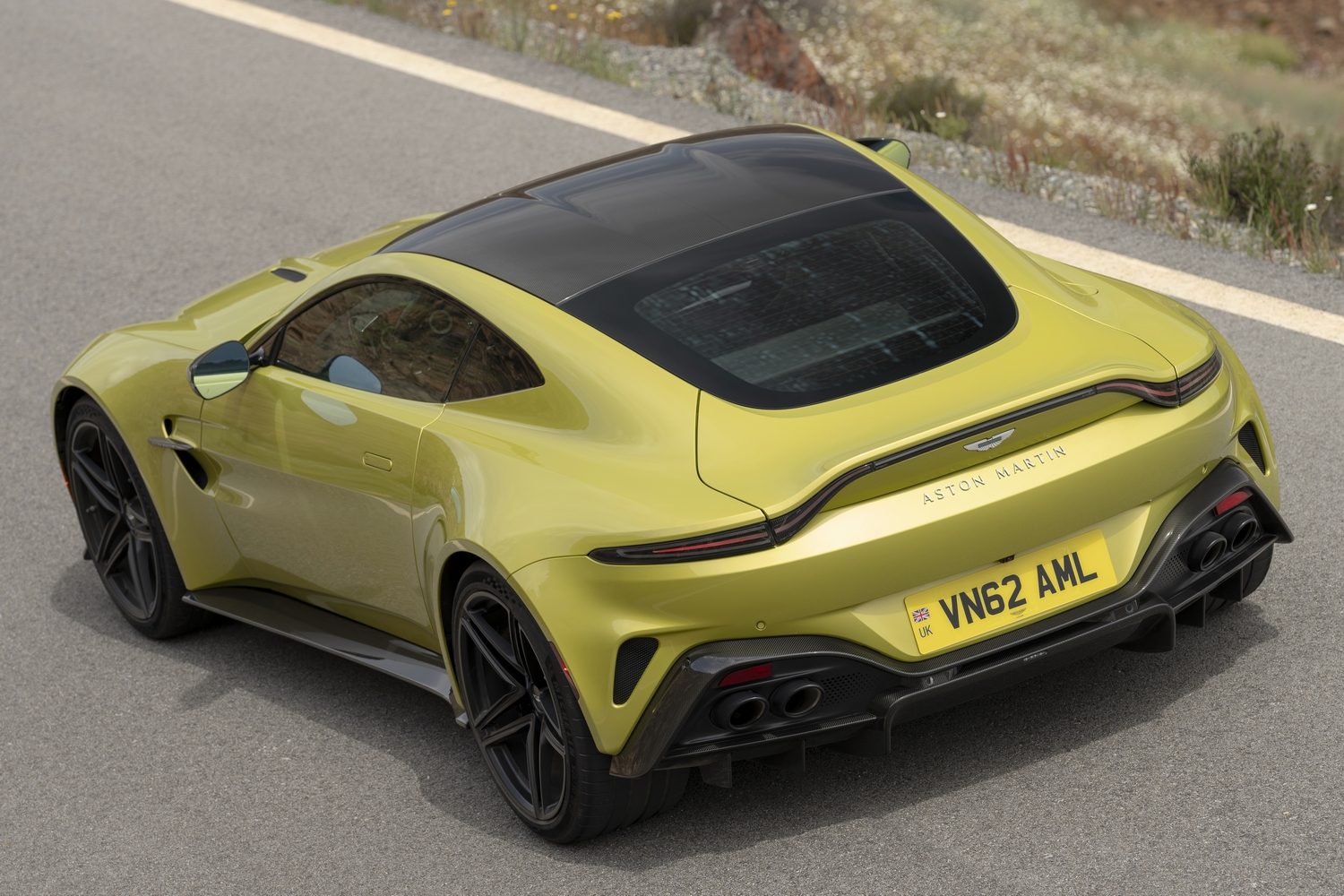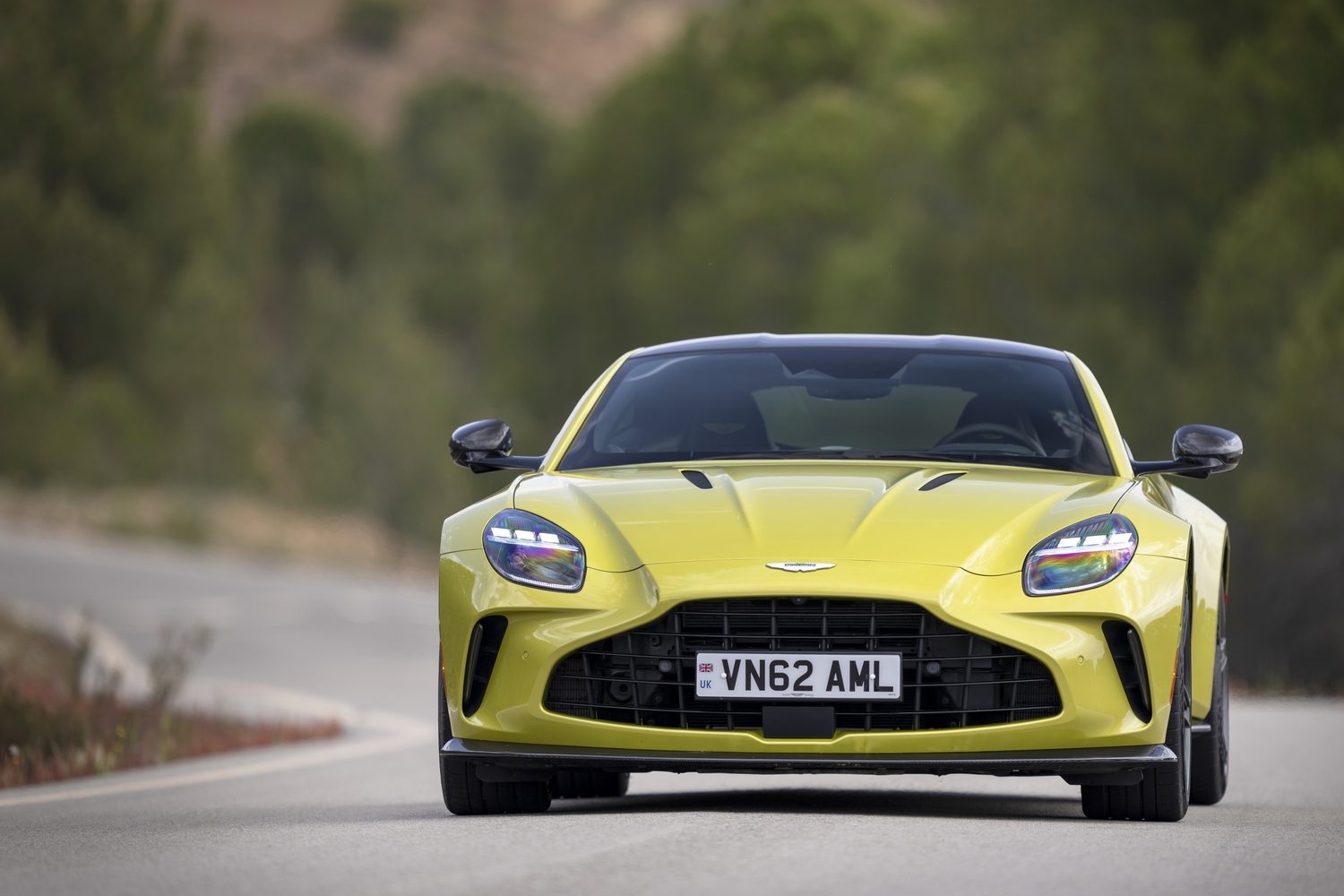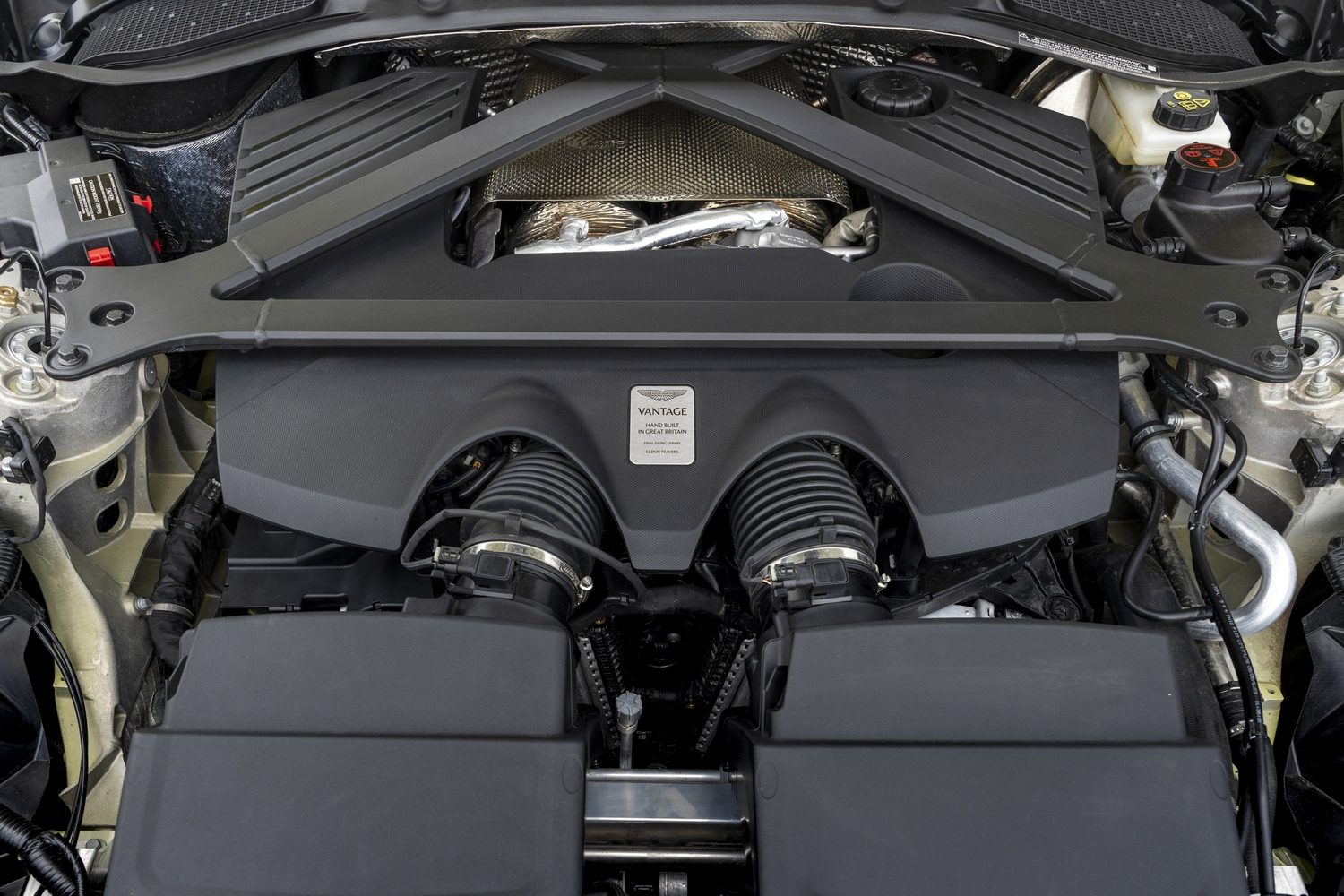A restrained design refresh for the Aston Martin Vantage hides a significant overhaul for the two-seat coupe, bringing with it an all-new interior, more technology than ever and a sharper focus on driver engagement. The potent twin-turbocharged V8 engine has received an eye-opening increase in output, too, aligning the 2024 model with some serious high-performance machinery. We tried it on road and track.
In the metal

Most of the obvious exterior design changes can be found at the front of the new Aston Martin Vantage, where the Valkyrie-inspired headlights link it - stylistically - with the new Aston DB12. Below those is a larger grille, allowing more cooling air into the engine bay, while the new intakes either side of that form ‘air curtains’ across the front wheels at speed in a bid to reduce drag. Another part of the new suite of aerodynamics updates is the integrated splitter joining the two front wheel wells.
A new set of forged 21-inch alloys set the tone from the side, and the car is some 30mm wider than before, adding to its stance. Detail changes include more slender door mirrors and a restyled side strake. At the rear, Aston’s designers left well alone, save for a wider bumper with vents from the rear wheel wells and a redesigned diffuser accommodating larger-diameter exhaust outlets.
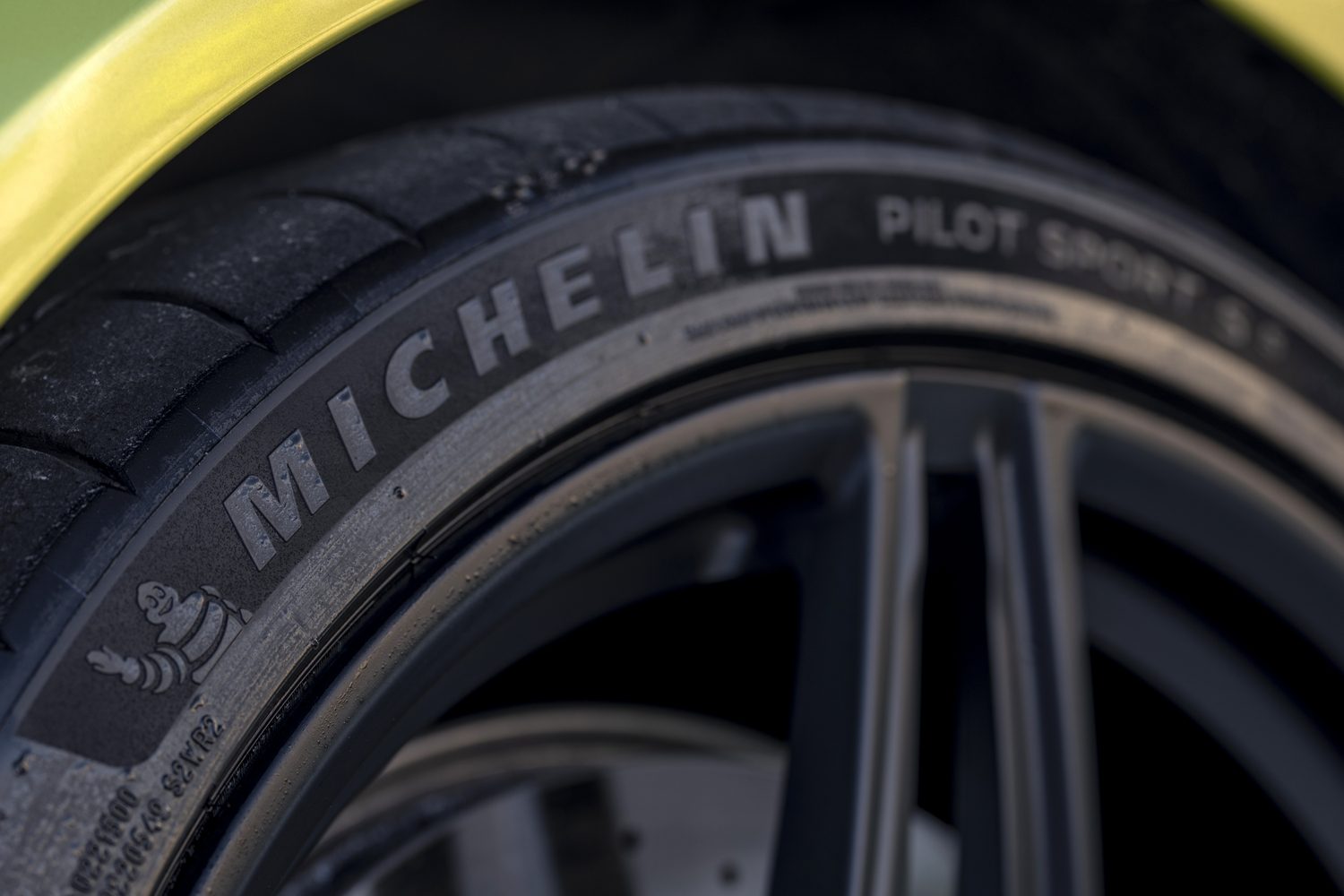
There’s a wide selection of paint colours to choose from, along with the option to add “Pinstripe, Pinstripe and Lipstick or Pinstripe, Lipstick and Rear infill” in contrasting hues for seemingly endless customisation. And that’s before you consider the Q by Aston Martin personalisation service. We suggest keep things simple, as the core shape is spectacularly muscular, and there’s something classy about adorning it with a single subdued shade of paint. On the other hand, it carries more lurid hues remarkably well, so each to their own preference...
The Vantage’s cabin can be personalised to the nth degree too, of course, but the big news here is that it’s now an interior worthy of the lofty price tag and market positioning. Gone are the old-school Mercedes bits and pieces (for the most part anyway) and in comes the new digital architecture that debuted in the Aston DB12. That means customisable digital instruments, a modern infotainment system accessible via a 10.25-inch touchscreen and interaction with smartphones in terms of a bespoke app and mirroring functionality.
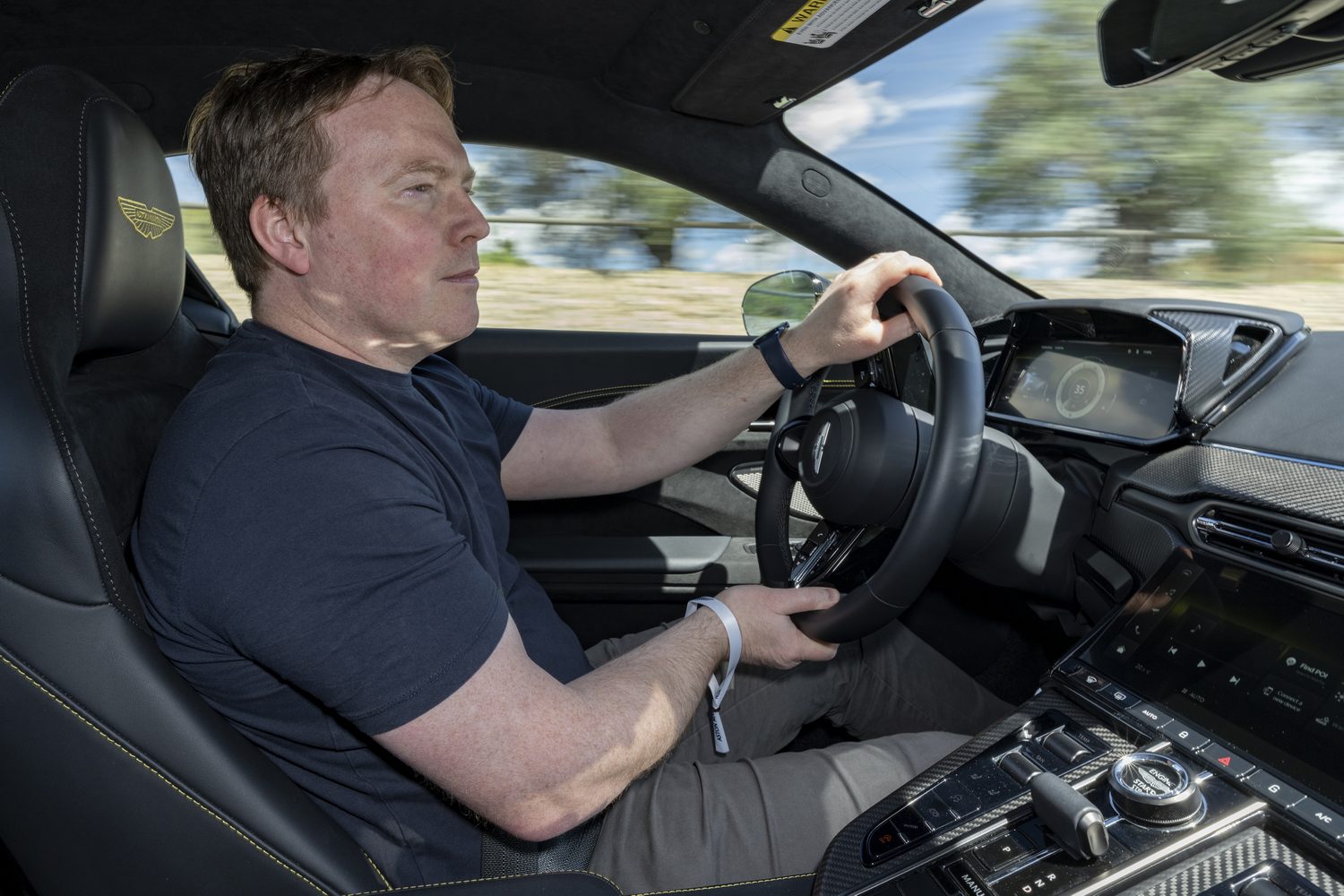
All this tech works quite well, but we’re just as excited to see that Aston has retained physical controls for key sub-systems such as the air conditioning and stereo operation. What’s more, the knurled switchgear is solid and tactile like little else in the automotive world. On the high centre console this is complemented by a (ludicrously solid) rotary drive mode selector and nub-like gear lever. Oh, and I nearly forgot the dinky little, high-quality interior door handles.
As before, the Vantage is strictly a two-seater, and luggage space is ‘fine’ for a sports car. It’s easy to get comfortable behind the (well-proportioned) new steering wheel thanks to electric adjustment of it and the seat. From there you’ll marvel at the transformation of the Vantage’s interior. It had become a weak point of the old car. Now it’s up there with the best.
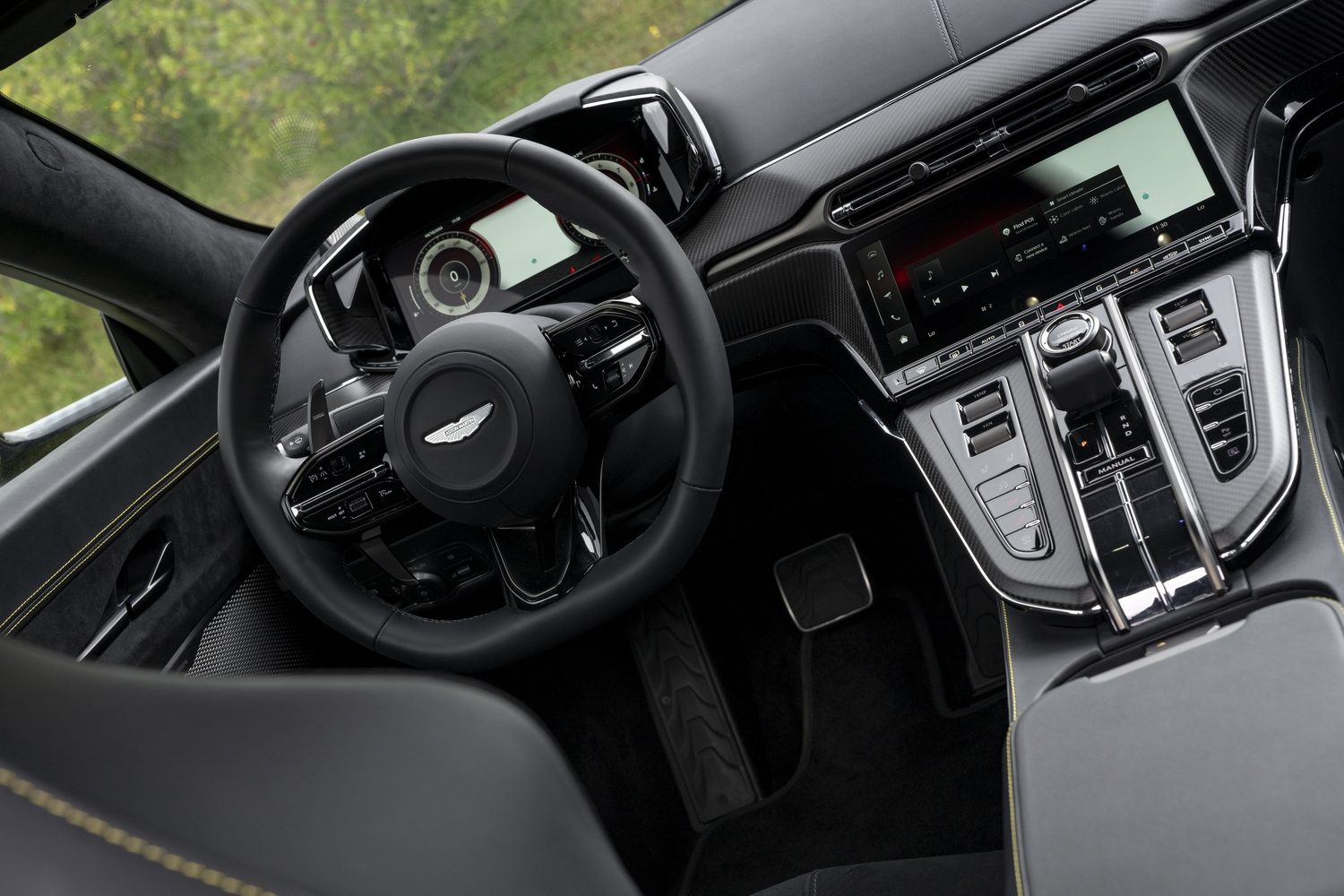
Driving it
At the heart of the Vantage - as before - is a Mercedes-AMG-derived V8 petrol engine. Aston Martin has significantly reworked the twin-turbocharged unit, however, using new cam profiles and bigger turbos to liberate up to 665hp and 800Nm of torque - gains of 30- and 15 per cent, respectively. It sounds like it means business through its quad-exhaust system even at low speeds (especially if you have the sports exhaust button pressed) and calls to mind Aston Martin’s own GT racers when it blasts past you at full speed on track.
Aston’s engineers were quick to point out that the upgrades to the engine and transmission were as much about response as outright performance, which explains the shortened final-drive ratio in the rear-mounted eight-speed automatic gearbox. The official 0-100km/h time of 3.5 seconds is sufficiently quick but the way the car gathers speed in the midrange is more telling. It can do so effortlessly riding the engine’s wave of torque, or you can flick one of the - deliciously metallic - gearchange paddles behind the steering wheel to drop a gear or two and explore the sonorous upper reaches of the rev counter if you want to really see what this car can do.

There have been considerable changes under the skin for the Vantage to live up to its ‘Engineered for Real Drivers’ tagline. To improve response, steering feel and cornering ability, the whole bonded aluminium structure has been stiffened up, notably so around the suspension mounting points. Aston quotes a 50:50 weight distribution, too, allowing drivers exploit the available grip and adjust the car’s poise as they see fit.
Fitted to this stiffer platform is a new generation of adaptive dampers, claimed to allow a much wider window of operation. The damping and electronically-controlled differential on the rear axle are altered according to a new vehicle dynamics control system, using an advanced six-axis accelerometer and other sensor inputs to alter the car’s behaviour depending on the road conditions and the selected driving mode.
Sport is the default setting, and though it uses the dampers at their ‘softest’ level, nobody could call it soft. It’s not uncomfortable, either, but there’s no doubt that you’re at the wheel of a sports car. The bespoke, low-profile Michelin Pilot Sport S 5 tyres help ensure you know what’s going on at road level - whether you’re in the mood to or not - and they’re not quiet on a rough surface either. Saying all that, the Vantage lopes along at a cruise on the motorway when required with little fuss. We even managed to better the official fuel consumption figure.
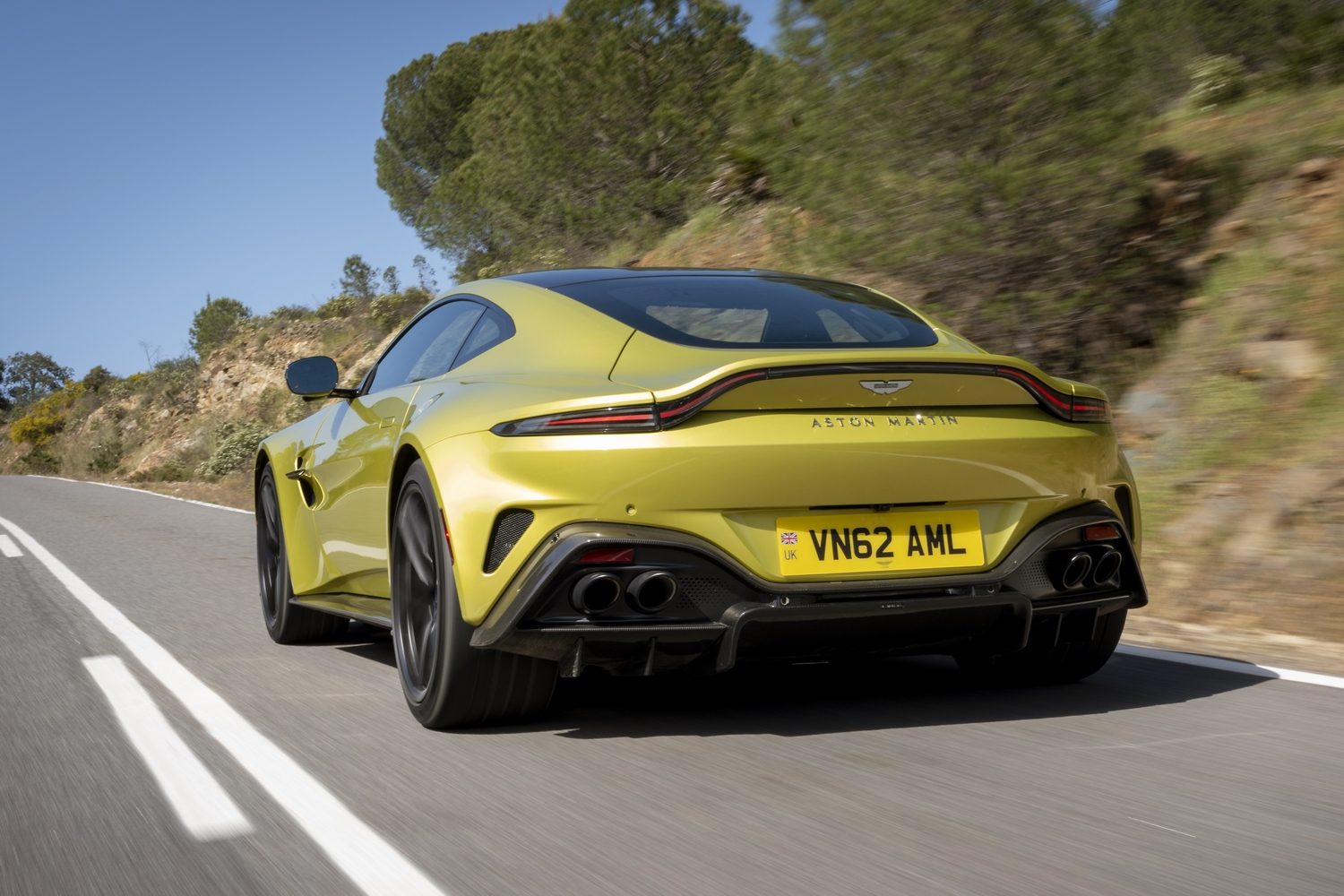
Well, until we turned off the motorway and explored the other driving modes that is...
There’s a Wet mode that enhances stability and makes the car easier to drive in slippery conditions but given the warm weather at the time of our test, we didn’t feel the need to activate it. The driver can also choose ‘Individual’ and pick and choose from their favourite settings for the engine response, transmission, power steering and damping.
We found the ideal setting for smooth, fast roads was the built-in Sport Plus level, where the body control is ramped up, the engine response is notably quicker - and it’s more boisterous - and everything seems a little more immediate. The Vantage is a joy to drive in this configuration, even at quite low speeds. It’s a tactile and engaging car in which you can feel everything that’s going on and - crucially, despite the addition of so much new technology - the driver still feels a part of the process.
To allow us to explore the outer reaches of the Vantage’s performance, we spent an afternoon lapping the Monteblanco race circuit in southern Spain. The car coped well, notably so on the braking front (steel brakes are standard, with carbon-ceramic discs an option) and it was huge fun, even if it was clear that this is not a car optimised for use on track. To optimise its time driven at such speeds, there’s a dedicated Track driving mode, meaning firmer damping again and other detail adjustments throughout the car aimed at giving drivers confidence to drive quickly.

The confident can press the ESP (stability control) button quickly to activate the Track ESP setting for a little more leeway at the limit, while the really confident can hold that button down to disable it completely and then use the central rotary controller to alter the level of traction control required over nine discrete steps. This is a great addition to allow owners build in confidence as they get to know their car.
In hot conditions, the squealing of the tyres precedes any noticeable reduction in grip and, even when provoked, the rear of the car is quite controllable beyond the limits of adhesion. There’s good communication from the chassis through the steering wheel to the driver’s hands, too, which makes it easier to push on, though the relatively short wheelbase can make it feel a little twitchy at times. That adds to its agility through tighter corners and on the road of course, which is where this car feels more at home.
What you get for your money

The only Aston Martin dealership on the island of Ireland is in Belfast, run by the Charles Hurst group. We suggest you’d need a little north of €420,000 to import a Vantage south of the border, and while it is quite well-equipped as standard, most buyers at this level see that as a starting point before they personalise the car to their preferences. The sky is the limit in that case, and the detailed level of customisation offered is off the scale.
Summary
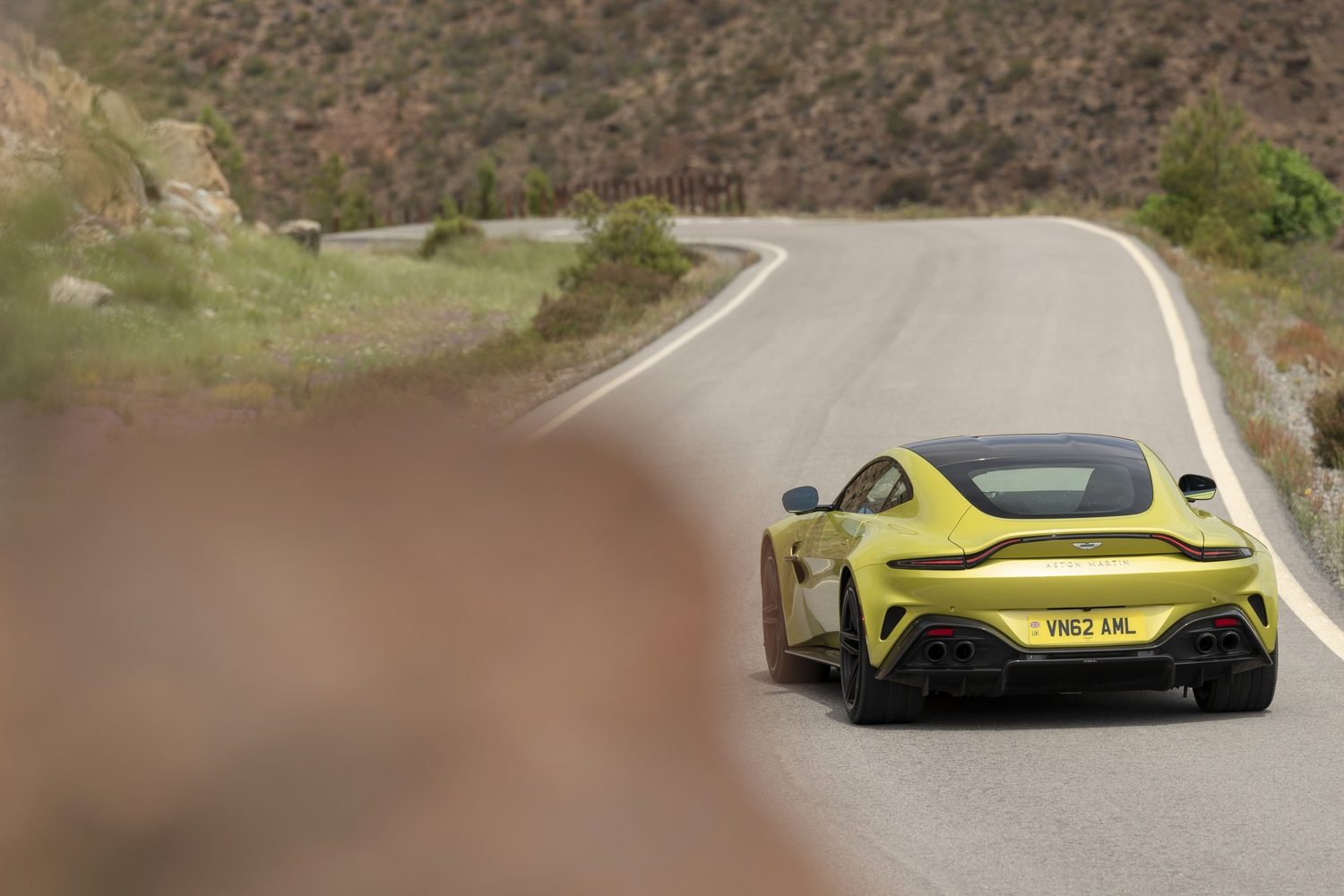
We loved the Aston Martin Vantage before this round of updates, despite its flaws. Thankfully, while ironing those out - notably inside the car - Aston hasn’t changed the core character of the Vantage and it’s still a proper sports car that owners will relish driving at every opportunity. It’s better-equipped than ever to allow them to do that more often. Lucky them.












